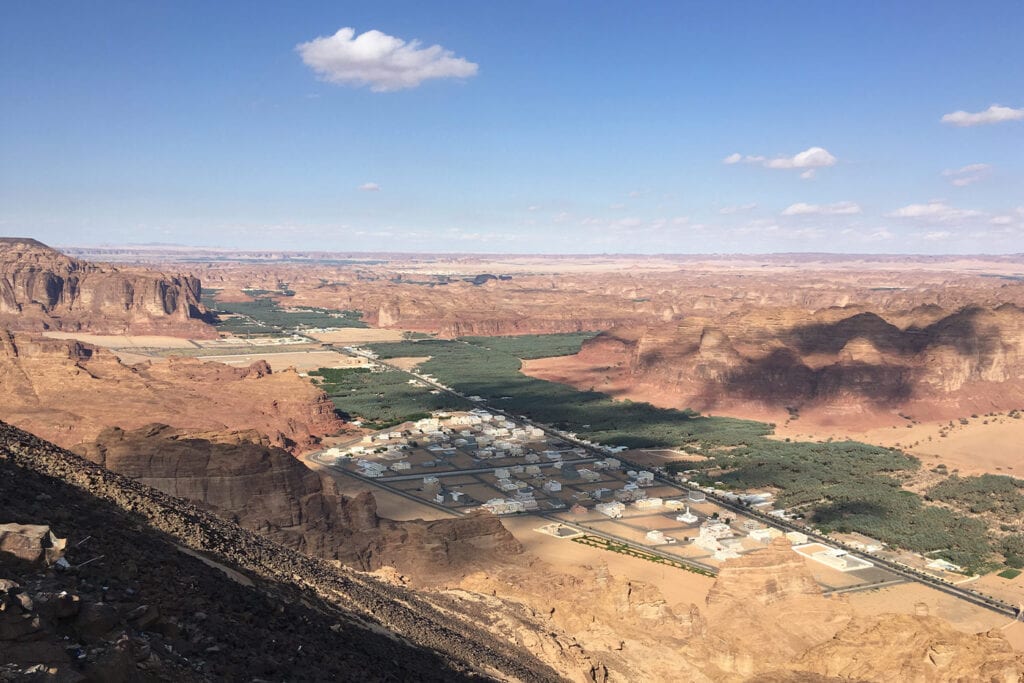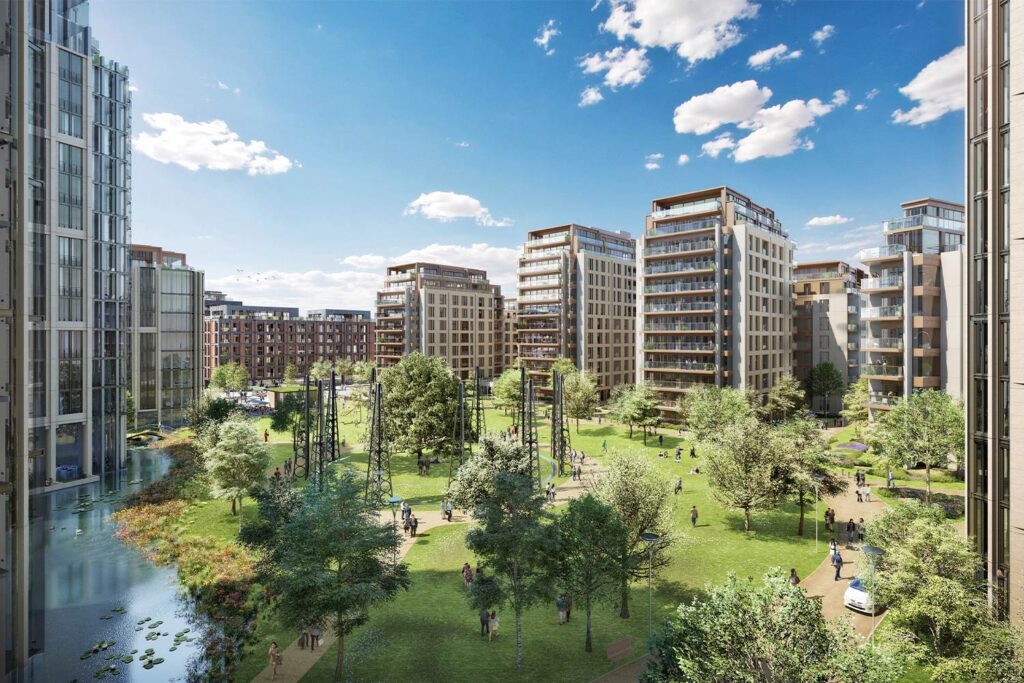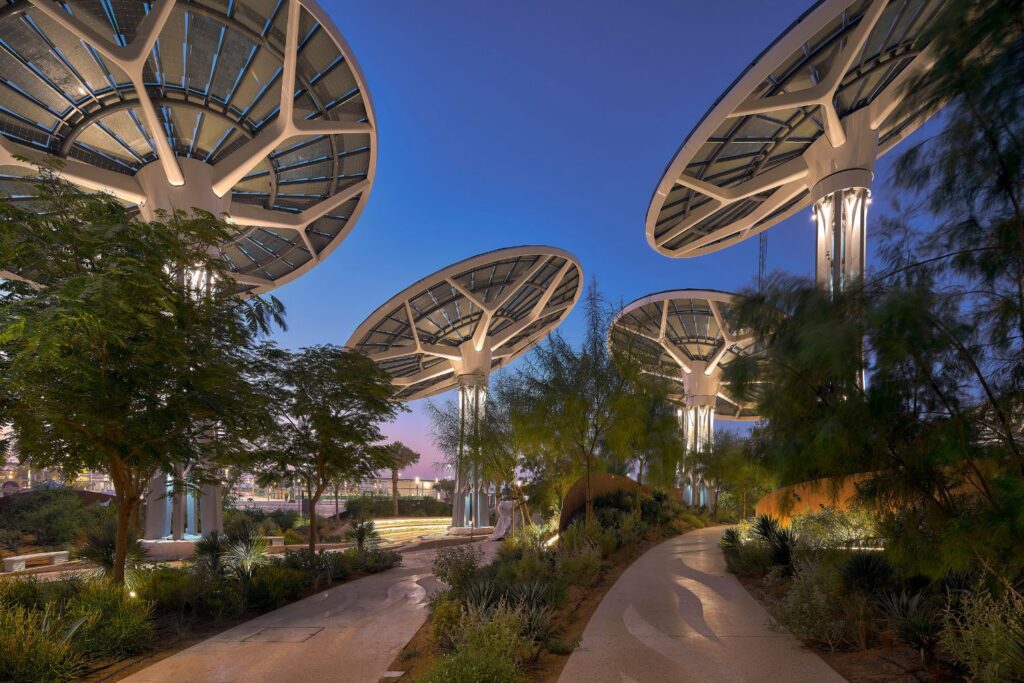Building within the planetary boundaries
We are facing a planetary emergency. But climate change and biodiversity loss are only part of the story. Other crises – such as water scarcity, ocean acidification, and waste accumulation – loom on the horizon. These crises are all too often overlooked by the construction industry.
As environmental consultants at Buro Happold, we believe in confronting preconceptions and rising to the challenges posed by all nine “planetary boundaries”.
Coined by scientists at the Stockholm Resilience Centre, the planetary boundaries framework takes a big picture perspective of what sustainability means. To achieve absolute sustainability, we must live within the limits of the Earth and ensure its stability and resilience for generations to come.
The framework enables this by measuring our collective impacts on nine critical Earth system processes in relation to their science-based targets:
- Ocean Acidification
- Biogeochemical Flows
- Land System Change
- Biosphere Integrity
- Climate Change
- Freshwater Use
- Stratospheric Ozone Depletion
- Atmospheric Aerosol Loading
- Novel Entities
In addition to climate change and biodiversity loss, these processes also include emerging issues such as freshwater overconsumption, ozone depletion, aerosol pollution, ocean acidification, nutrient pollution, the spread of toxic, long-lived substances, and land degradation.
The more boundaries we cross, the more likely it is for the planet to reach its tipping point. In the words of Ray Pierrehumbert, a lead author of the IPCC’s Third Assessment Report, the planetary boundaries are “not the edge of the cliff”. Instead, they can be viewed more like “avalanche warning tapes on a ski slope”, warning us of the dangers that lie ahead.

Crossing the Earth’s Boundaries
Of the nine boundaries, six have been officially crossed with ocean acidification at high risk of being the seventh. On a tangible level, the UK has already experienced some impacts, from increasing water stress in Southern England to human-induced algal blooms degrading watercourses in 74 local planning authorities.
We know that the industry contributes to 39% of global greenhouse gas emissions, but as much attention should be given to understanding impacts of buildings and construction across all nine boundaries. As the industry continues to grow, we need to ensure that the built environment not only minimises its impacts but also regenerates planetary systems.
Moreover, we must acknowledge Earth’s complexity and the need for greater systems thinking. In tackling climate change adaptation, we have learned to design buildings that are resilient to intensifying heatwaves and flooding. However, to take actions on the planetary boundaries, we need to think bigger and look at the interconnections between all nine systems to prevent cascading failure and harness opportunities for synergy in the solutions we propose.

Pushing our Boundaries
At Buro Happold, we have already addressed some of these planetary issues in our projects. Our ecology consultants have collaborated with our green infrastructure and water specialists to restore the riverine landscape and create urban forests at Mayfield, improving biodiversity in the central Manchester area.
Our work in arid regions such as AlUla in the Kingdom of Saudi Arabia has also taught us to apply circular economy principles to water resource management, preserving our freshwater supplies through strategies such as rainwater harvesting and greywater recycling.
Nevertheless, we see potential in driving larger-scale change by revamping our current practices to align with the planetary boundaries framework.
Here are five things we believe built environment professionals should consider when approaching the planetary boundaries:
Raising awareness
Thinking about the planetary boundaries is new to practitioners, clients, and stakeholders alike. Through our design and consulting work, we must inform all parties involved about the importance of all nine boundaries and encourage a shift in societal norms. We need to see ourselves as part of the wider ecosystem and understand that we live on a finite planet.
Fostering more multidisciplinary collaboration
A valuable lesson from the framework is the need to overcome silo thinking. We cannot address each boundary in isolation and must look for new ways to engage in information sharing and problem solving across disciplines. For instance, this could involve assessing the ecological effects of nutrient pollution from wastewater flows or analysing how ground contamination disrupts essential soil functions such as carbon sequestration.
Adapting our workflow and practices
As an industry, we must map the planetary boundaries onto the services we currently offer to determine how well they align with the framework and identify opportunities for integration.
To enable this, Environmental Impact Assessment (EIA) coordinators play an essential role in initiating and spearheading change. By adapting EIA strategies, they are able to engage with various technical and engineering specialists and explore how impact assessments and environmental design and management approaches could better consider and safeguard each boundary.
Filling our capability gaps
Addressing the planetary boundaries will require us to venture into new territory. We must determine gaps in our expertise to partner with the right collaborators and investigate innovative ideas, methods, and tools to refine the way we work.
This could range from developing an integrated methodology for measuring our impacts on ecosystem services and natural capital assets using environmental and biodiversity net gain, to researching how to factor embodied impacts beyond carbon such as embodied water into whole-life assessments and selection criteria for building materials.
Reporting on the planetary boundaries
Alongside our technical work, we must examine how information about the planetary boundaries could be conveyed through the deliverables we produce in an effective and accessible manner. Doing so would help contextualise the project’s impacts and provide a better understanding of how local impacts relate to global environmental change.
However, we should also ensure that such reporting is done proportionately and does not detract the design team and EIA decision makers from any materially relevant issues.
Opportunities for planetary boundaries communication could include:
- Screening, Scoping, and Environmental Impact Assessments (EIA)
- Strategic Environmental Assessments (SEA)
- Design input for masterplanning
- Construction Environmental Management Plans (CEMP)
- Environmental site appraisals
- Due diligence reviews against national and international standards

In a rapidly urbanising world, there will always be a need to build more, strengthening the case for planetary stewardship. By reimagining the way we work, we hope to keep the bigger picture in focus and proactively shape project designs to deliver better environmental outcomes. We invite all built environment practitioners and the wider industry to join us in ensuring that we are collectively building within the planetary boundaries, whilst meeting society’s growing demand.
Sources:
- Joel Achenbach. 2015. Scientists: Human activity has pushed Earth beyond four of nine ‘planetary boundaries’. In The Washington Post.
- Potsdam Institute for Climate Impact Research. 2022. Planetary boundaries update: freshwater boundary exceeds safe limits. Figure designed for Stockholm Resilience Centre based on an analysis of Steffen et al. (2015), Wang-Erlandsson et al. (2022), and Persson et al. (2022)
- Department for Environment, Food & Rural Affairs. 2022. Government sets out plan to reduce water pollution
- World Green Building Council. 2019. New report: the building and construction sector can reach net zero carbon emissions by 2050.







